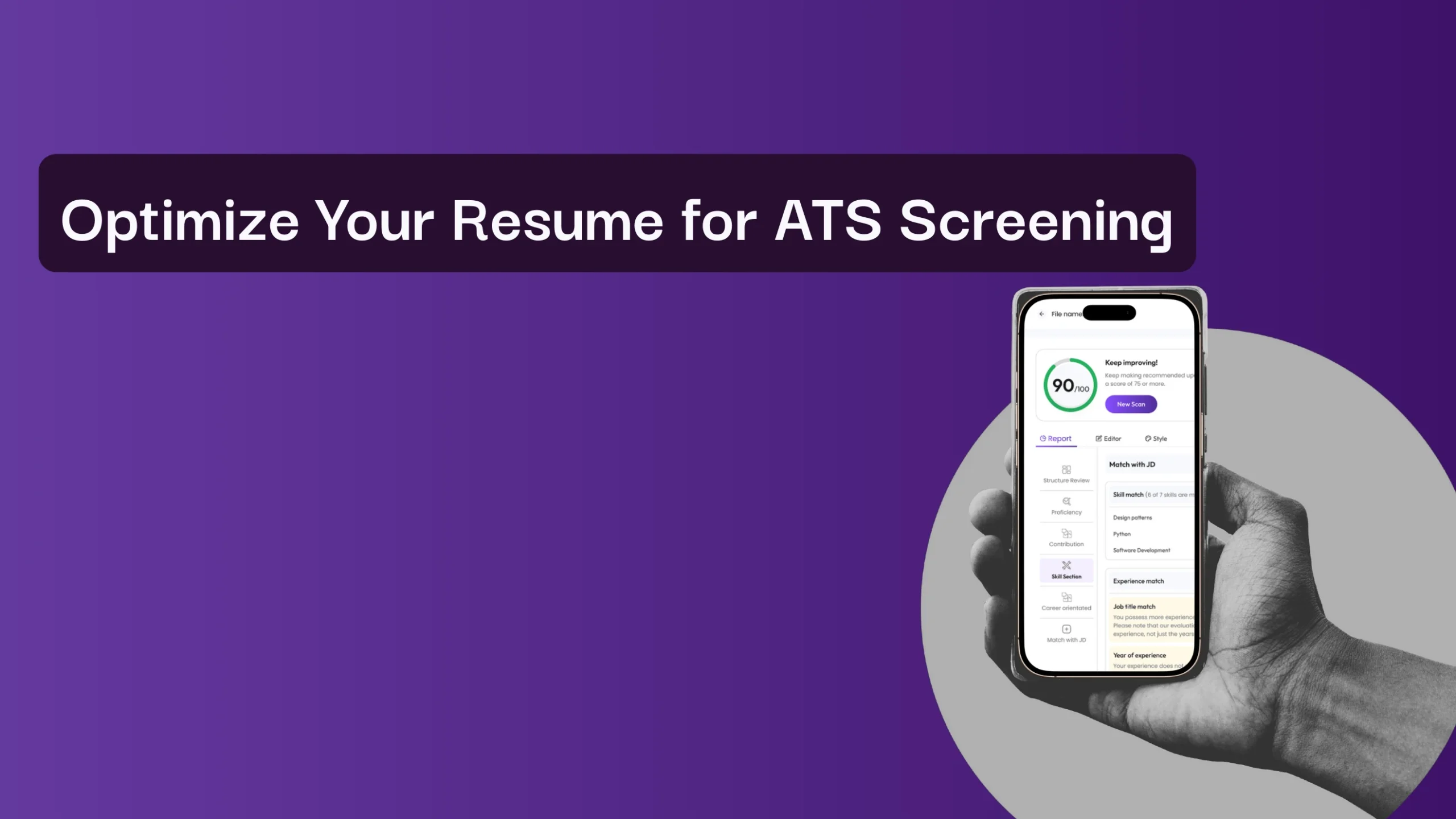How AI Reads and Scores Resumes
AI-driven hiring goes beyond simple keyword matching. Companies now use ATS(Applicant Tracking System) tools to evaluate resumes based on:
- Relevance to the job description
- Skills and experience highlighted in context
- Readability and structure for easy AI parsing
- Overall sentiment and tone
Understanding how ATS scans your resume is the first step to ensuring it stands out. Here’s how to optimize yours.
1. Use the Right Keywords Strategically
AI systems rank resumes based on their relevance to job descriptions. To optimize your resume:
- Identify keywords from job descriptions and integrate them naturally.
- Avoid stuffing keywords—AI detects and penalizes forced repetition.
- Show skills in action (e.g., “Led data analysis projects that increased efficiency by 20%” instead of just listing “Data Analysis”).
2. Choose an AI-Friendly Resume Format
Your resume’s structure affects how well ATS systems interpret it. The reverse-chronological format is the safest bet, as it presents your most recent experience first.
Formats to Use:
- Reverse-chronological – Best for clear career progression.
- Hybrid (combination) – Ideal for career changers or varied experience.
Formats to Avoid:
- Graphics-heavy resumes – Complex designs can make parsing difficult.
- Functional resumes – ATS struggles to interpret non-linear formats.
3. Optimize Your Resume Structure for AI
A well-structured resume ensures readability and categorizes your content correctly. Follow these best practices:
- Use standard section headings (e.g., “Work Experience,” “Education”).
- Write concise bullet points that start with strong action verbs.
- Avoid tables, images, and multiple columns—some AI tools may miss key details.
4. Design for AI and Human Recruiters
Your resume should be ATS-compatible without losing its visual appeal. Keep it clean and easy to read:
- Stick to professional fonts like Arial, Calibri, or Rubik.
- Maintain 1-inch margins and simple formatting.
- Use consistent spacing and clear section breaks for readability.
5. Use Strong, Action-Oriented Language
ATS favors resumes that highlight impact-driven results rather than vague descriptions. Instead of saying:
“Responsible for managing a sales team.”
Try:
“Led a sales team that exceeded targets by 30% within six months.”
Always quantify achievements where possible to increase ATS scoring and human engagement.
6. Do a Final AI Readability Check
Before submitting, ensure your resume is ATS-optimized and error-free:
- Run it through an AI resume checker to catch formatting or keyword issues.
- Save as a PDF (unless specified otherwise) to maintain structure.
- Review readability manually—it should sound natural, not robotic.
So
AI-driven hiring is reshaping job applications, but a well-optimized resume ensures you stay ahead. By following these six strategies, you can boost your chances of passing ATS screenings and landing interviews.
Want a hassle-free way to create an ATS-optimized resume? Try avua ai resume builder today and get noticed by top employers.



